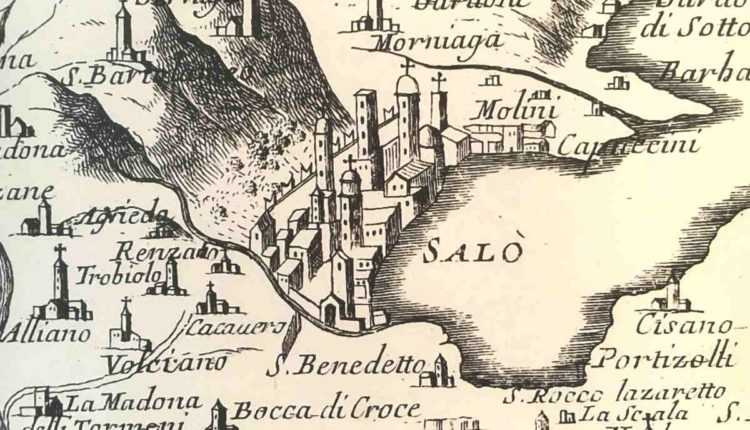THE HISTORY IN CONTEXT
In order to paint a relatively clear picture of the history of the building, we will have to reach deeper in the history of the region. The oldest document mentioning the strip of land by Lake Garda is a decree issued in the year 958 by Berengar II and Adalberto claiming the land as their own and granting it as a fief to the Brescian family of Ugoni, who held the land in fealty until the 17th century. When the family line ended with no surviving heirs, the land title was passed to the residents of the town. Gardone was invaded by the German Imperial army in 1704 during the war for Spanish succession. The area was invaded by troops representing both sides of the conflict: the Imperial army and the French-Spanish one culminating in the battle of Rocchetta di Bornico on 23rd April 1706. As a result of the battle, suffering heavy losses, the Spanish troops were pushed away beyond Salo, thus liberating the towns of Gardone and Fasano.

Image: gardapost.it
Peace returned in 1714 and lasted for nearly a century, but in 1797 the town, being at the time part of the Venetian Republic, was plundered by the Napoleonic army and occupied by the Jacobin Brescian troops forcing unification with Brescia.
In 1815, Gardone fell under the Austrian rule as part of the constituent land of Lombardo-Venetian Kingdom. Riviera di Salò was incorporated into Desenzano and later joined the Cisalpine Republic. Together with Austrian domination came restoration and development of tourism, which grew substantially after the Italian unification.

